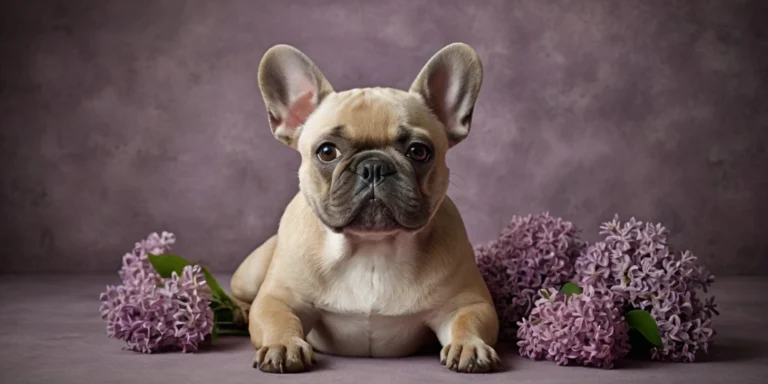Brown Maltipoo Temperament: Why These Pups Steal Hearts
Brown Maltipoos, the gorgeous cross between a Maltese and a Poodle with stunning chocolate-hued coats, are winning over dog lovers with their affectionate, playful, and intelligent temperament. These designer dogs, also known as Multipoos or Maltepoos, blend the Maltese’s cuddly devotion with the Poodle’s clever charm, making them perfect companions for anyone seeking a low-shedding, joyful friend. This guide dives into the brown Maltipoo temperament, exploring their personality, how they interact with people and pets, and tips for nurturing their best traits, while highlighting what makes their rich brown coat so special, helping you decide if this delightful pup is your ideal match.
What Is a Brown Maltipoo?
A brown Maltipoo is a hybrid dog resulting from a Maltese and a Toy or Miniature Poodle, sporting a coat in shades of brown, from light tan to deep chocolate. They typically weigh 4–20 pounds and stand 7–14 inches tall, with wavy or curly coats that are low-shedding, as noted by sources like Greenfield Puppies. The brown color, inherited from the Poodle parent, is less common than cream or white, adding a unique appeal, though temperament remains consistent across colors, per Browns Dogs.
Key Traits of Brown Maltipoo Temperament
Brown Maltipoos share the breed’s signature temperament, defined by these traits:
- Affectionate: They adore cuddling, often sticking close to their owners and seeking attention, earning the “lap dog” nickname.
- Playful: Their lively energy makes them great for games like fetch or indoor romps, keeping homes fun.
- Intelligent: Poodle genes make them quick learners, mastering tricks and commands with ease.
- Sociable: They’re friendly with kids, pets, and strangers, thriving in social environments.
Their sensitivity requires gentle handling, and their need for company can lead to separation anxiety if left alone too long, as highlighted by Hill’s Pet.
How Brown Maltipoos Interact with People
Brown Maltipoos are people-loving dogs, excelling in environments with human interaction.
With Owners
These pups form tight bonds, often following their owners like shadows and craving cuddle time. Their affectionate nature makes them ideal for emotional support, as owners share on platforms like PuppySpot. They love joining daily routines, from walks to Netflix nights.
With Children
Their gentle temperament suits families with older kids who can respect their small size. Brown Maltipoos enjoy playful interactions but need supervision with younger children to avoid accidental rough play, as advised by The Spruce Pets.
With Strangers
Brown Maltipoos are typically welcoming to strangers, greeting guests with curiosity or a wagging tail. Early socialization ensures they stay confident rather than shy or overly vocal, though they may bark to alert, per PetsRadar.
Brown Maltipoos and Other Pets
Maltipoos, including brown ones, are sociable with other animals when socialized early. They get along with dogs, cats, or smaller pets, making great playmates, though their size requires caution around larger dogs. Gradual introductions foster harmony, as suggested by Dogsintl. Their playful side shines in multi-pet homes, as seen in owner posts on X describing a brown Maltipoo blending seamlessly with other dogs.
Nurturing the Brown Maltipoo Temperament
To enhance a brown Maltipoo’s personality, focus on socialization, training, and a supportive environment.
Early Socialization
Socialize puppies from 8–12 weeks by exposing them to people, pets, sounds, and places, like dog parks or cafes. Positive experiences shape a confident, friendly adult, as emphasized by pet behaviorists. This is crucial for brown Maltipoos to maintain their sociable nature.
Positive Reinforcement Training
Their intelligence and eagerness to please make training fun. Use treats, praise, or play to teach commands like “sit” or “quiet.” Their sensitivity means harsh tones can cause anxiety, so keep sessions short and positive, as recommended by Simply Southern Pups.
Managing Separation Anxiety
Their devotion can lead to separation anxiety, causing whining or chewing when alone. Prevent this by:
Professional trainers can help if anxiety persists, as noted by Embarkvet.
Brown Maltipoo Temperament in Different Settings
Brown Maltipoos adapt to various lifestyles, with their temperament thriving in environments that meet their needs.
In Apartments
Their small size and moderate energy suit apartment living. They need 30 minutes of daily exercise, like walks or indoor play, making them ideal for urban homes, as owners share on social platforms.
In Family Homes
They excel in family settings with older kids or active adults. Their playful, affectionate nature fits households with regular interaction, though they may become clingy without attention, per Purina.
With Seniors
Their calm, cuddly temperament makes them perfect for seniors. They enjoy light walks and lap time, offering companionship while being low-maintenance, as noted by rescue groups.
Potential Behavioral Challenges
Brown Maltipoos are generally well-mannered, but their temperament can present challenges:
- Barking: They’re vocal, barking to alert or express excitement. Teach the “quiet” command to manage this, as suggested by PetsRadar.
- Separation Anxiety: Their attachment can cause distress when alone. Gradual training helps.
- Stubbornness: A Poodle’s occasional streak may emerge. Consistent training keeps them cooperative.
Early socialization and training, as emphasized by Great Pet Care, prevent these issues.
Exercise and Brown Maltipoo Temperament
Their playful temperament requires moderate exercise to stay balanced. Aim for 30 minutes daily, including:
Puzzle toys or new commands engage their minds, preventing boredom-related behaviors, as noted by Hill’s Pet.
How Temperament Affects Training
Brown Maltipoos’ intelligence and eagerness make training straightforward. They learn commands quickly, often within weeks, thanks to Poodle genes. Their sensitivity requires gentle methods:
Consistency ensures their temperament shines as cooperative, as advised by Daily Paws.
Health and Temperament Connection
Health impacts temperament. Pain from issues like dental disease or patellar luxation can make them irritable, while proper care supports their cheerful nature. Common concerns include:
A healthy brown Maltipoo displays their affectionate temperament, as per The Spruce Pets. Reputable breeders, like Browns Dogs, health-test parents to minimize risks.
The Appeal of the Brown Coat
The brown coat, ranging from light tan to rich chocolate, is a standout feature, inherited from the Poodle parent. It’s less common than cream or white, adding uniqueness, as noted by Fisher Mountain Puppies. The coat is low-shedding, ideal for allergy sufferers, but requires weekly brushing and trims every 4–8 weeks to prevent matting, per Browns Dogs. The brown hue doesn’t affect temperament but enhances their teddy bear-like charm, making them eye-catching companions.
Choosing a Brown Maltipoo Based on Temperament
When selecting a brown Maltipoo, temperament is key. Reputable breeders, like those on PuppySpot, assess puppies’ personalities to match them with homes. Ask about:
Adopting an adult brown Maltipoo from rescues reveals their temperament clearly, as they’re past the puppy phase, per Embarkvet.
Fun Facts About Brown Maltipoo Temperament
Tips for Nurturing Brown Maltipoo Temperament
To enhance your brown Maltipoo’s personality:
Conclusion
Brown Maltipoos, with their rich chocolate coats and affectionate, playful, and intelligent temperament, are perfect companions for various lifestyles. Their love for people and adaptability make them ideal for apartments, families, or seniors, though their sensitivity and need for company require dedicated care. By prioritizing socialization, gentle training, and regular exercise, you’ll nurture a loyal, joyful friend who brings love for years. Ready for a brown Maltipoo? Explore reputable breeders or rescues to find your cuddly match!







